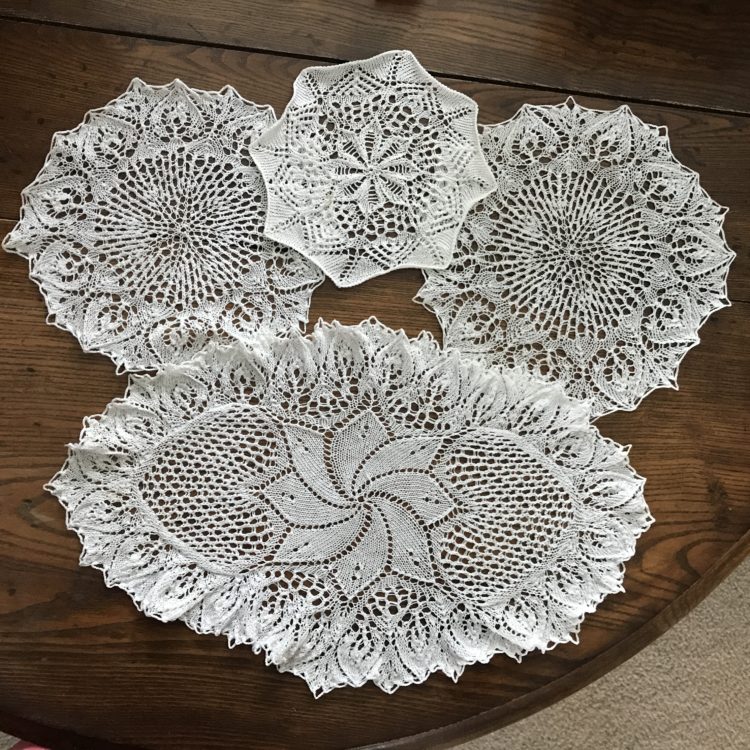
A Lace-maker Analogy
I make lace. Lace-making transforms a tangled mess of yarn into an ordered pattern of beauty with loops and holes. This is a lace curtain that I made for the window beside our door.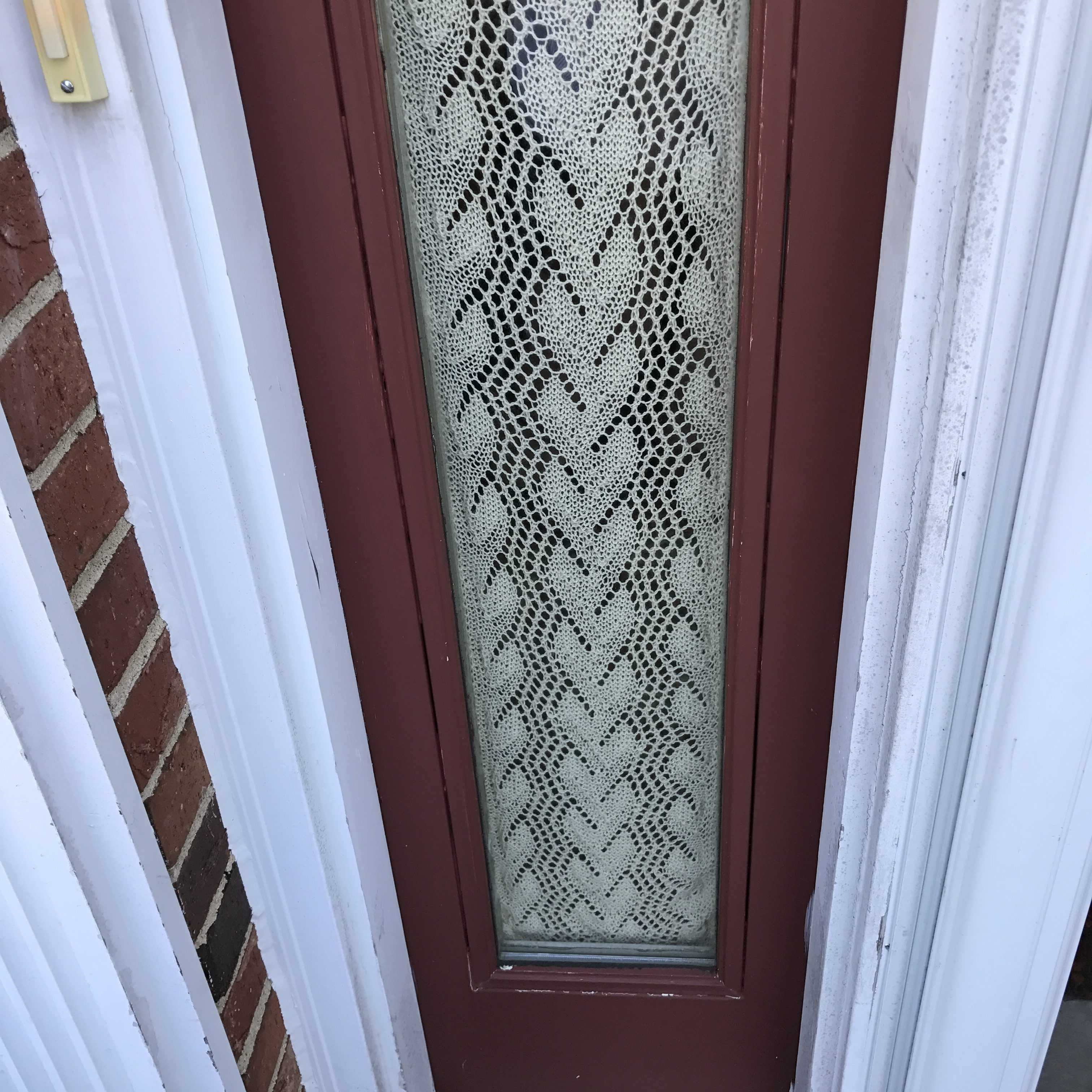 (Leaf and Trellis pattern from Jane Sowerby’s Victorian Lace Today)
(Leaf and Trellis pattern from Jane Sowerby’s Victorian Lace Today)
You can see more examples of my lace at the end of this post.
Lace-making is a skill that requires resources, tools, creativity, manual dexterity, hand-eye coordination, time, patience and perseverance. The yarn doesn’t just order itself into a creation of beauty one simple move, one simple loop or hole at a time. It requires a Maker.
As a young adult at that heathen state school Indiana University (Go Big Red!), one of the first things I did was explore the existence of God. For me, the most compelling argument in favor of God was the order, beauty, and complexity of the observable natural world. Just like a beautiful piece of lace, I could not bring myself to believe that it all came into being by chance, that there wasn’t a “Maker.”
Similarly, unknown to me at the time, the Watchmaker analogy is an ancient metaphor, developed more recently by William Paley (Collins, pp. 86-88). The argument uses complex and sophisticated watchworks as a metaphor for the complex natural world. If I were to substitute lace, it would go something like this: Lace (and all of the natural world) is irreducibly complex; therefore, lace (and all of the natural world) must have a Maker.
This is such a compelling argument for so many people that the Intelligent Design movement was birthed out of it (Collins, p. 183). Intelligent Design (ID) posits that all organisms come into being as a result of direct supernatural intervention in the natural world. ID rejects evolution as the process by which the Creator creates. A central argument for ID is that there exist organisms so complex that they could not possibly have come into existence via a series of apparently random and improbable replications/mutations/selective adaptations.
However, there is observable evidence within biological life itself that refutes irreducible complexity, in support of evolution. Both Francis Collins (The Language of God) and Dennis Venema (Adam and the Genome) provide compelling evidence for evolution in their respective books, using recent scientific advances, such as the mapping of the human genome. Collins, in particular, explains in great detail how the human eye, in all it’s wondrous complexity, could have emerged from a series of simple duplications/adaptations/mutations (Collins, pp 190-191).
I still believe this complex world is evidence of a Creator God. Unlike proponents of ID, I also accept evolution as the process by which He creates and sustains the natural world.
I enjoy making lace, but wouldn’t it be wonderful if one morning I awoke to find that a tangled skein of yarn had miraculously formed itself into a beautiful piece of lace, with no effort on my part at all. Such a thing would indeed require supernatural intervention! But you see, this is exactly what God did when He initially created the world. He supernaturally created and supernaturally sustains a process that naturally creates and naturally sustains itself.
Charles Kingsley was an Anglican priest who was a contemporary and friend of Darwin. Upon hearing of Darwin’s theory of evolution, his response was, “We knew of old that God was so wise that He could make all things; but behold, He is so much wiser than even that, that He can make all things make themselves.” (McGrath, p 114)
What an awesome God He is!
Resources
The Language of God, Francis Collins, Simon & Schuster, 2006.
Adam & the Genome, Dennis Venema & Scot McKnight, Baker Publishing, 2017.
The Big Question, Alister McGrath, St. Martin’s Press, 2015.
I mostly make knitted lace. I make lots of scarves. Here is a blue one.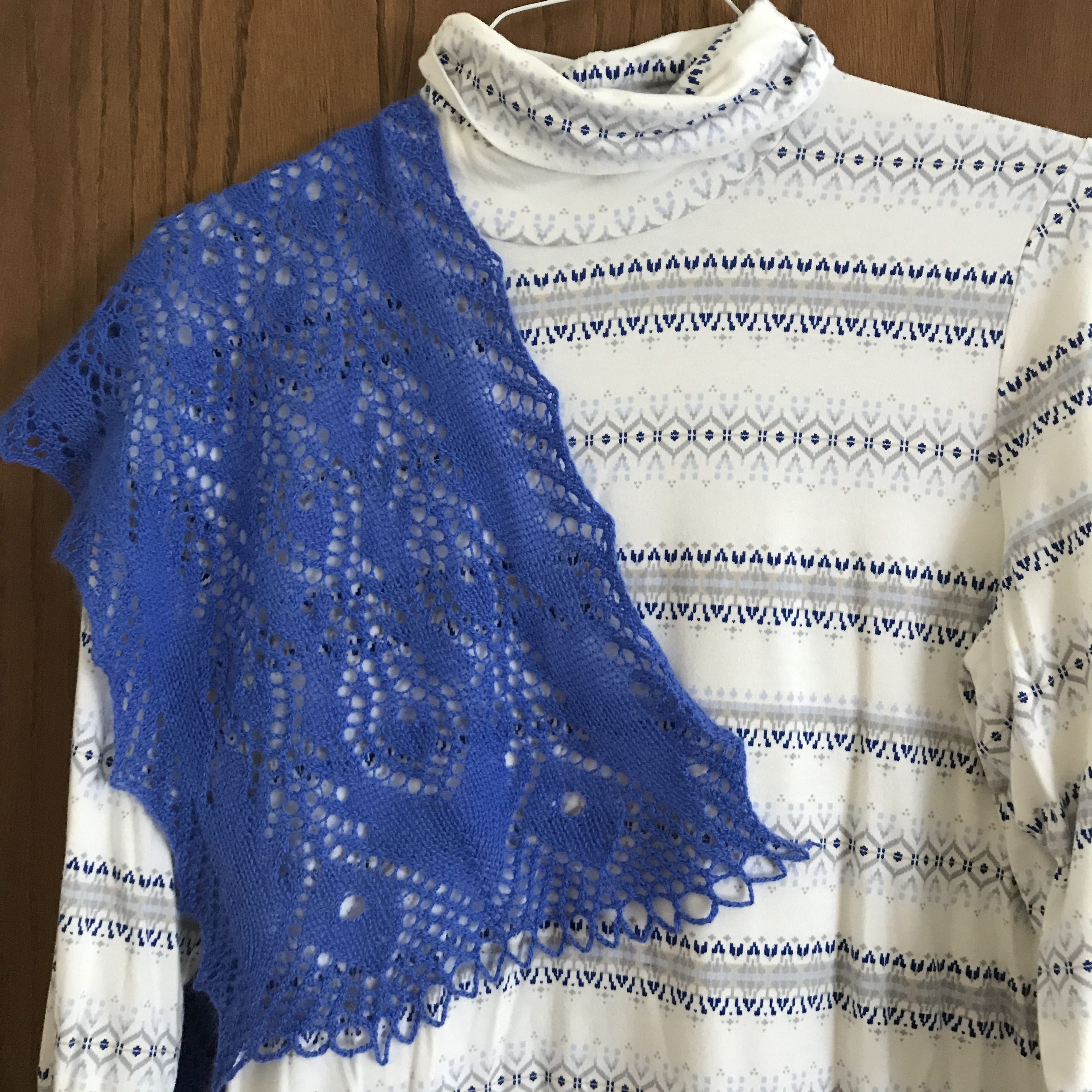 (Peacock Feathers design from Fiddlesticks Knitting)
(Peacock Feathers design from Fiddlesticks Knitting)
Here is a scarf that I made for my friend Cheryl.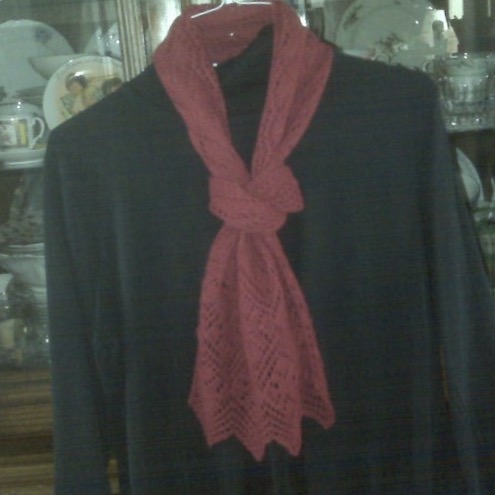
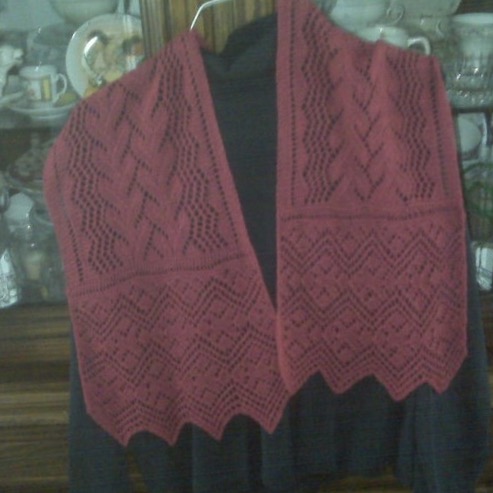
(Edging 21, Insert 25 from Sowerby)
Sometimes the Creator is not happy with the creation. I am about to rip this one up and re-do. I ran out of yarn about 5 inches short on the edging, and it’s too wide/too short anyway.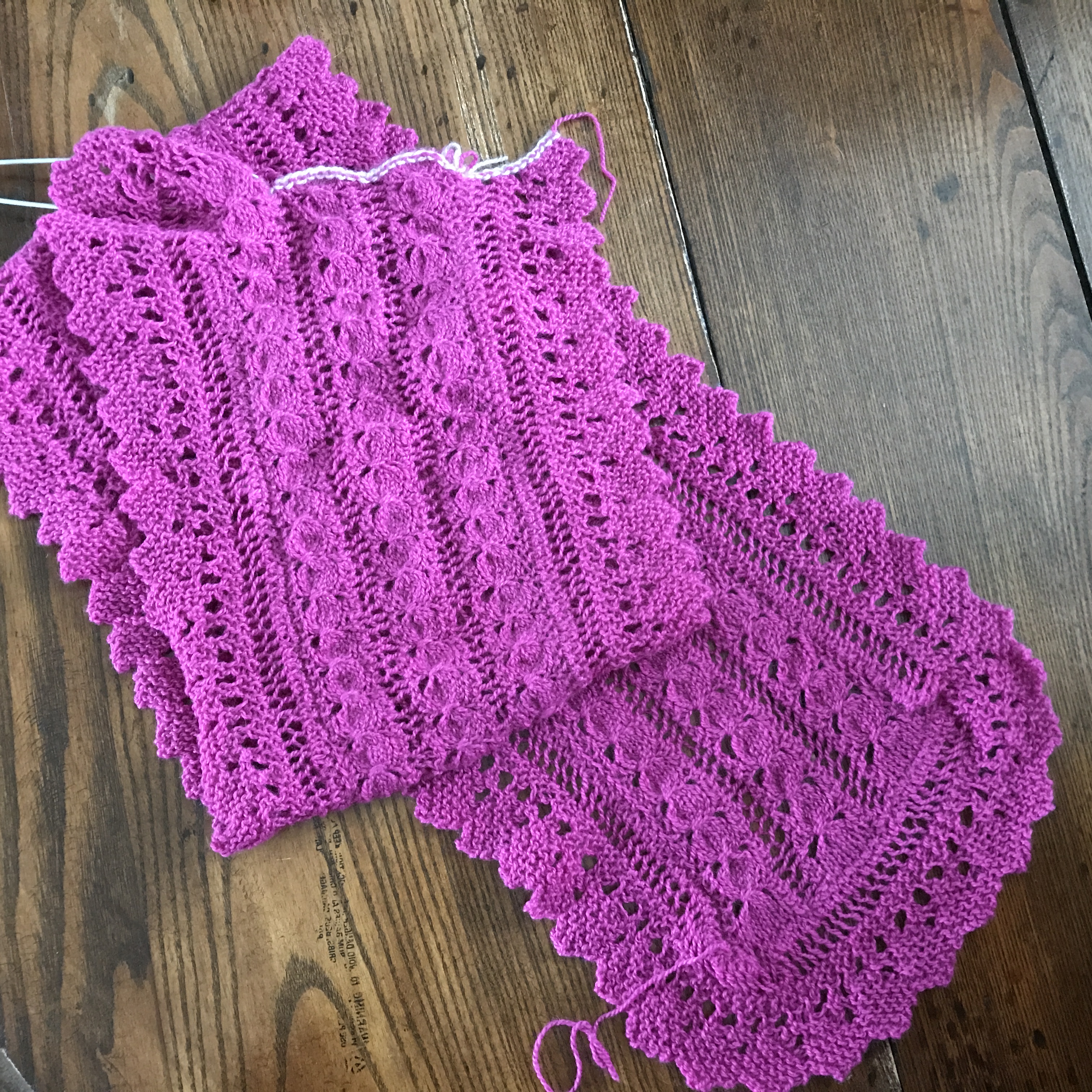 (Melon pattern from Sowerby)
(Melon pattern from Sowerby)
This black scarf is in-process. Very pleased with it, thankful it’s almost done. Dark colors are extremely difficult to work with, especially with aging eyes. (Backdrop: White lace sheers from Germany.)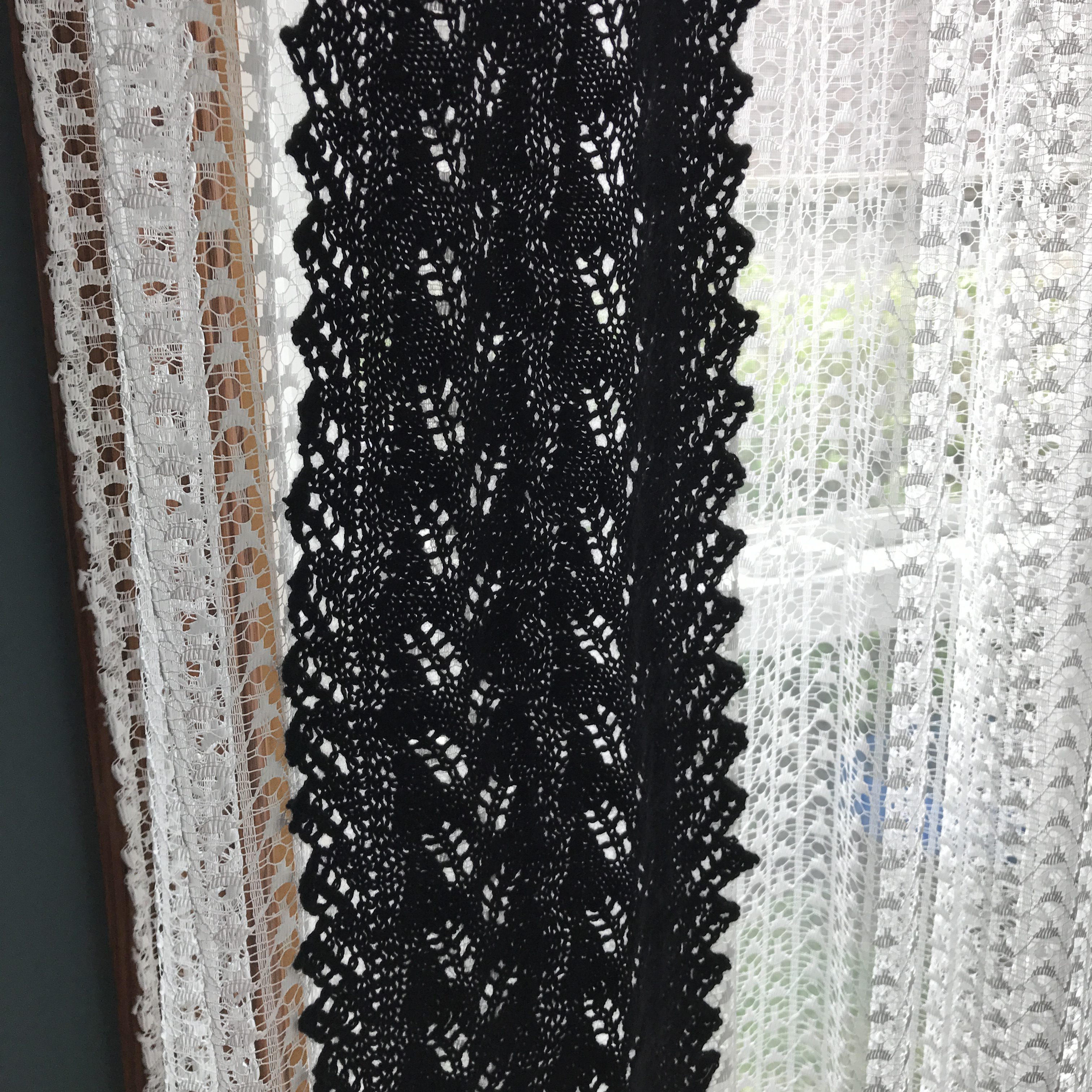 (Fern lace pattern from kayray.org)
(Fern lace pattern from kayray.org)
I wear this lilac cashmere scarf a lot. Do you see the flaw? Unlike the beautiful Persian rugs that are woven with intentional flaws (only Allah is perfect, thank you, Judy Hamilton), I don’t make mistakes on purpose. I do a lot of ripping out, actually. But sometimes errors charm me enough to leave them in.
(This is not an original pattern, but alas, the instructions have been lost, so I cannot give proper credit.)
I experimented with tatted lace when I was much younger (too tedious), and I recently made a crocheted swatch. What do you think? It will be prettier after it’s blocked…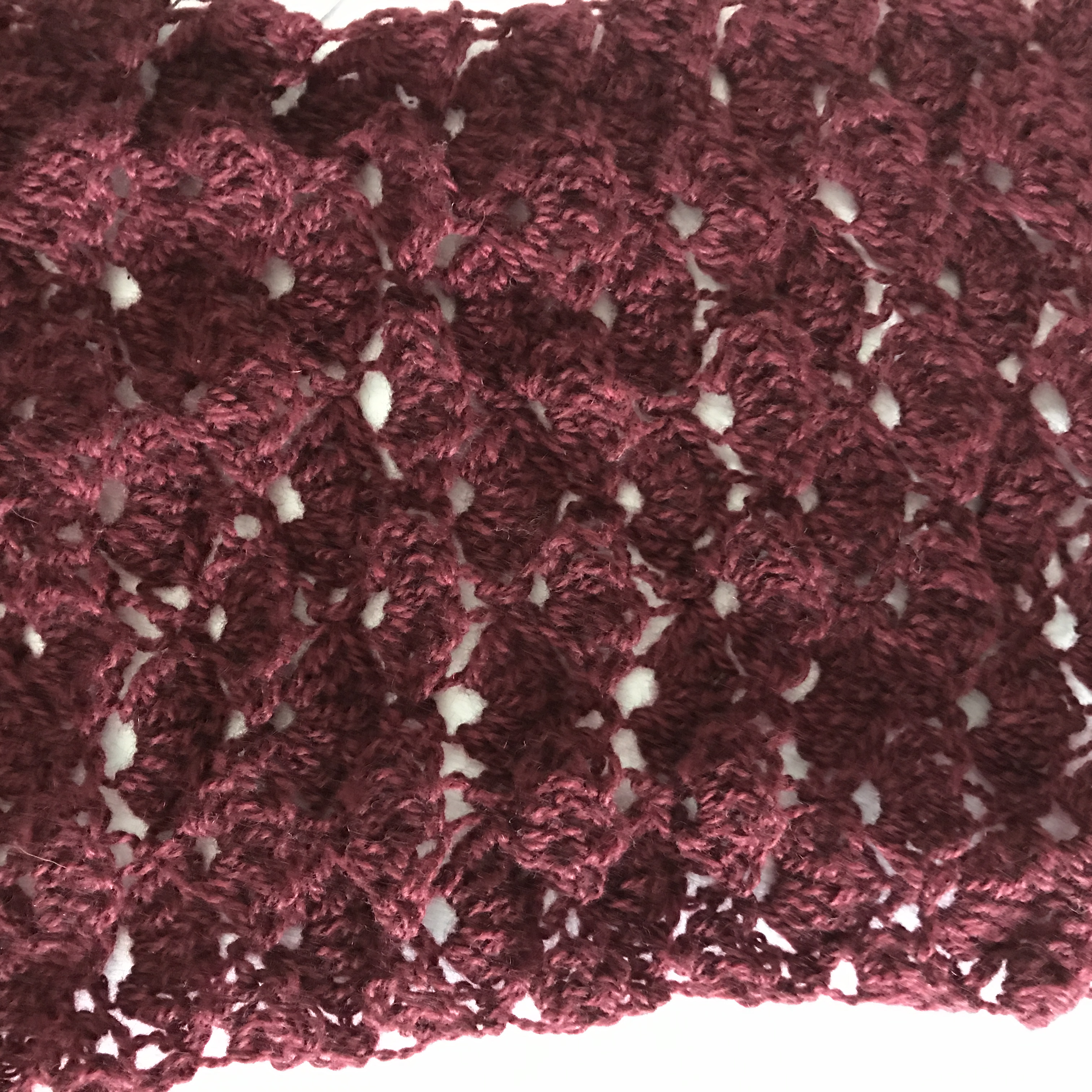 (Design by The Art of Zen Crochet)
(Design by The Art of Zen Crochet)
The lace at the top of this post are a couple examples of knitted lace doilies that I made years and years ago. Sadly, these instructions are also lost to time, so I am unable to give proper credit to the designer.